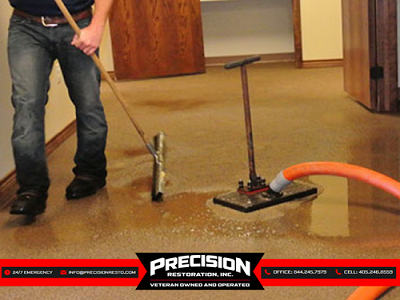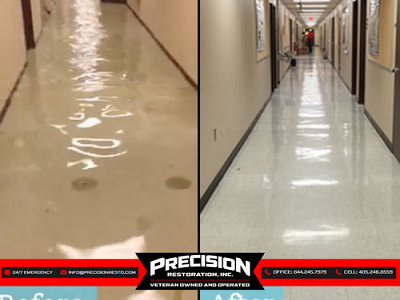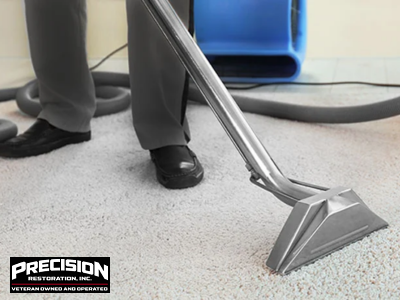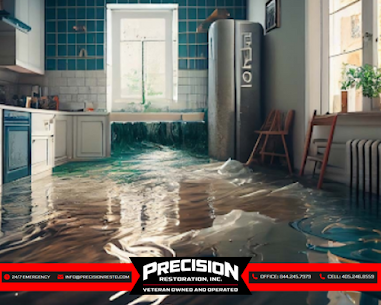Water Damage Restoration for Commercial Properties: A Comprehensive Guide
Water damage in commercial properties can be a nightmare for business owners. Whether it’s from a burst pipe, a natural disaster, or a malfunctioning sprinkler system, the impact on your business can be devastating. In this comprehensive guide, we’ll explore what you need to know about water damage restoration for commercial properties, including prevention strategies, response protocols, and the steps involved in effective restoration.
Understanding Water Damage

Water damage can vary in severity and source. It can stem from:
- Internal Sources: This includes burst pipes, leaky roofs, broken sprinkler systems, and overflowing sinks or toilets. These issues often result from poor maintenance or sudden failures.
- External Sources: Heavy rain, flooding, or storm surges can overwhelm drainage systems and cause significant damage.
- Accidental Causes: Human error or accidents such as fire suppression systems activating or containers of liquid being accidentally spilled.
Understanding the source of water damage is crucial for effective restoration. Each type requires different approaches and methods for mitigation and repair.
The Water Damage Restoration Process
The water damage restoration process involves several crucial steps to effectively address and repair damage. First, professionals conduct a thorough inspection to assess the extent of the damage and identify the source of the water. Next, they remove standing water using pumps and vacuums, followed by drying affected areas with industrial dehumidifiers and air movers to prevent mold growth. Once the area is dry, cleaning and sanitizing are performed to eliminate contaminants and ensure the safety of the environment.
Inspection and Assessment
Initial Inspection: Professionals will perform a thorough inspection to assess the extent of the damage. This includes checking for hidden water damage in walls, ceilings, and floors. Moisture Detection: Using moisture meters and thermal imaging, professionals will detect hidden moisture, which can lead to mold growth and structural damage if not addressed.
Water Removal
Extract Standing Water: Powerful pumps and vacuums are used to remove standing water. The sooner this step is completed, the less damage will occur. Drying: After water is removed, industrial dehumidifiers and air movers are used to dry out the affected areas. This step is crucial to prevent mold growth and further damage.
Cleaning and Sanitizing
Surface Cleaning: Surfaces affected by water damage are cleaned and disinfected. This includes carpets, furniture, and structural elements. Sanitization: Water can carry contaminants that pose health risks. Professional sanitization ensures that all surfaces and materials are free from harmful bacteria and pathogens.
Restoration and Repairs
Structural Repairs: Repair or replace damaged structural elements such as drywall, flooring, and insulation. This step restores the integrity and safety of the building. Reconstruction: In severe cases, reconstruction may be necessary to restore the property to its pre-damage condition. This might include rebuilding walls, replacing ceilings, and reinstalling flooring.
Final Inspection
Quality Check: A final inspection ensures that all damage has been addressed and that the property is safe and habitable. This includes checking for any residual moisture and verifying that all repairs meet industry standards.
Preventing Future Water Damage
- Regular Maintenance: Inspect Plumbing: Regularly check pipes, hoses, and appliances for leaks or wear. Replace old or damaged components before they fail. Maintain Roof and Gutters: Ensure that your roof is in good condition and that gutters are clear of debris. Proper drainage helps prevent water from seeping into the building.
- Install Water Detection Systems: Water Alarms: Install water leak detectors in areas prone to water damage, such as near pipes and appliances. These alarms alert you to potential issues before they become severe.
- Update Insurance Policies: Review Coverage: Ensure that your insurance policy covers water damage. Review your coverage regularly and make adjustments as needed to protect your commercial property.
- Train Employees: Emergency Procedures: Train employees on how to respond to water damage emergencies. This includes knowing how to shut off water sources and how to contact emergency services.
Choosing a Water Damage Restoration Company
Selecting the right restoration company is crucial for effective water damage restoration. Consider the following factors:
Experience and Expertise
When dealing with commercial water damage, it’s imperative to choose a company with extensive experience in restoration for such settings. Commercial properties often face unique challenges, including larger spaces, intricate building systems, and high-value equipment, all of which require specialized knowledge and advanced techniques to address effectively. An experienced restoration company brings a wealth of expertise to manage complex and large-scale issues efficiently.
Certification and Credentials
Look for certifications from reputable organizations such as the Institute of Inspection, Cleaning, and Restoration Certification (IICRC). This indicates that the company adheres to industry standards.
24/7 Availability
Water damage can strike unexpectedly, whether it’s due to a burst pipe, heavy rainfall, or a malfunctioning appliance, making it crucial to select a company that provides 24/7 emergency services. Water can quickly cause extensive damage to property, leading to issues such as mold growth, structural instability, and loss of personal belongings if not addressed promptly. A company that operates around the clock ensures that you receive immediate assistance whenever an emergency arises, minimizing potential damage and reducing the risk of costly repairs.
References and Reviews
Check reviews and ask for references from previous clients. Positive feedback and successful case studies can provide insight into the company’s reliability and quality of service.
Insurance and Licensing
When selecting a water damage restoration company, it is crucial to verify that they are fully insured and licensed to operate in your area. Insurance coverage protects you from potential liability in the event of any accidents or damages that occur during the restoration process, providing financial security and peace of mind. Additionally, a valid license ensures that the company adheres to local regulations and industry standards, reflecting their commitment to quality and professionalism.
Essential Tips for Effective Water Damage Restoration
Effective water damage restoration is crucial for minimizing damage and ensuring a swift recovery. The first step is to address safety concerns by shutting off electricity and identifying the water source. Professional help is essential, as restoration experts use advanced equipment to remove standing water, dry affected areas, and prevent mold growth. Prompt action can significantly reduce the extent of damage and repair costs.

Once the immediate damage is managed, focus on thorough cleaning and sanitizing to eliminate contaminants. Inspect and repair structural elements, such as drywall and flooring, to restore the property’s integrity. Regular maintenance and timely intervention are key to preventing future water damage and ensuring your property remains safe and functional.
How to Choose the Right Water Damage Restoration Service
Choosing the right water damage restoration service is crucial for effective and efficient recovery. Start by looking for companies with strong experience and expertise in handling commercial water damage. Verify their certifications from recognized organizations like the Institute of Inspection, Cleaning, and Restoration Certification (IICRC) to ensure they follow industry standards. A reputable company should also offer 24/7 emergency services, as water damage can occur at any time.
Additionally, check customer reviews and request references to gauge their reliability and quality of service. Ensure the company is fully insured and licensed to operate in your area, providing you with protection and peace of mind. Comparing estimates and understanding the scope of services offered will also help you make an informed decision.
Preventing Water Damage in Commercial Properties
Preventing water damage in commercial properties involves proactive maintenance and strategic planning. Regularly inspect and maintain plumbing systems, roofs, and gutters to identify and address potential issues before they escalate. Installing water detection systems and alarms in areas prone to leaks can provide early warnings and prevent significant damage. Additionally, ensure that drainage systems are clear and functional to handle heavy rainfall or accidental spills effectively.
Employee training is also crucial, as it equips staff with the knowledge to handle emergencies and report issues promptly. Reviewing and updating your insurance coverage ensures that you are protected against potential water damage costs. By implementing these preventive measures, you can significantly reduce the risk of water damage and protect your property’s integrity and value.
Conclusion
Water damage restoration for commercial properties is crucial in maintaining the integrity and functionality of your business premises. Effective restoration not only addresses immediate concerns but also prevents future complications, safeguarding your investment and ensuring minimal disruption to your operations. Precision Restoration, Inc. stands out for its expertise and commitment to excellence in handling such complex scenarios, offering tailored solutions that meet the unique needs of each commercial property.
Choosing a trusted partner like Precision Restoration, Inc. means you can focus on running your business while we manage the restoration process with precision and care. Our dedicated team in Oklahoma City is equipped with the latest technology and techniques to deliver prompt, reliable, and efficient service. Protect your property and minimize downtime by partnering with professionals who prioritize your business’s restoration needs.


